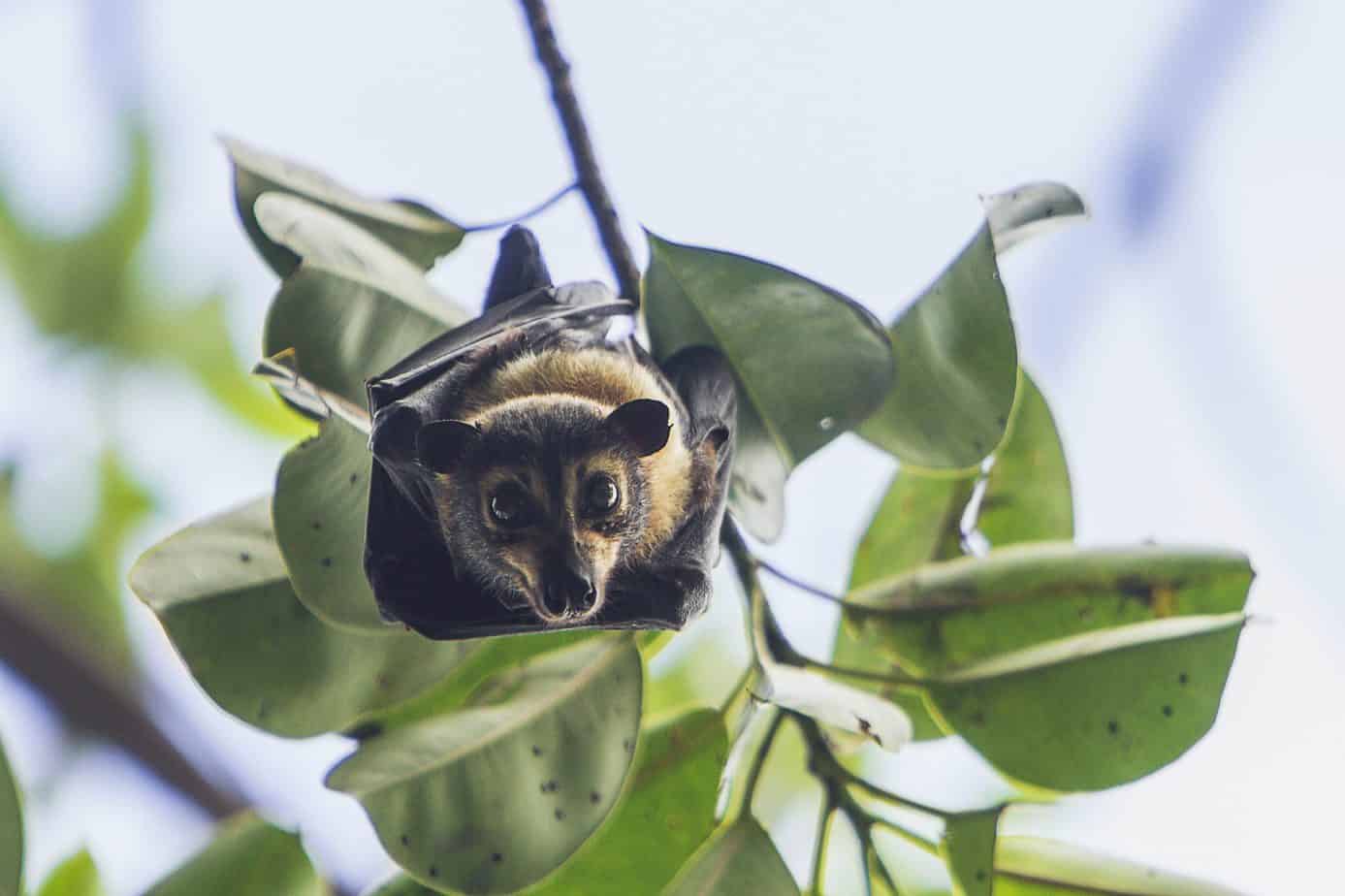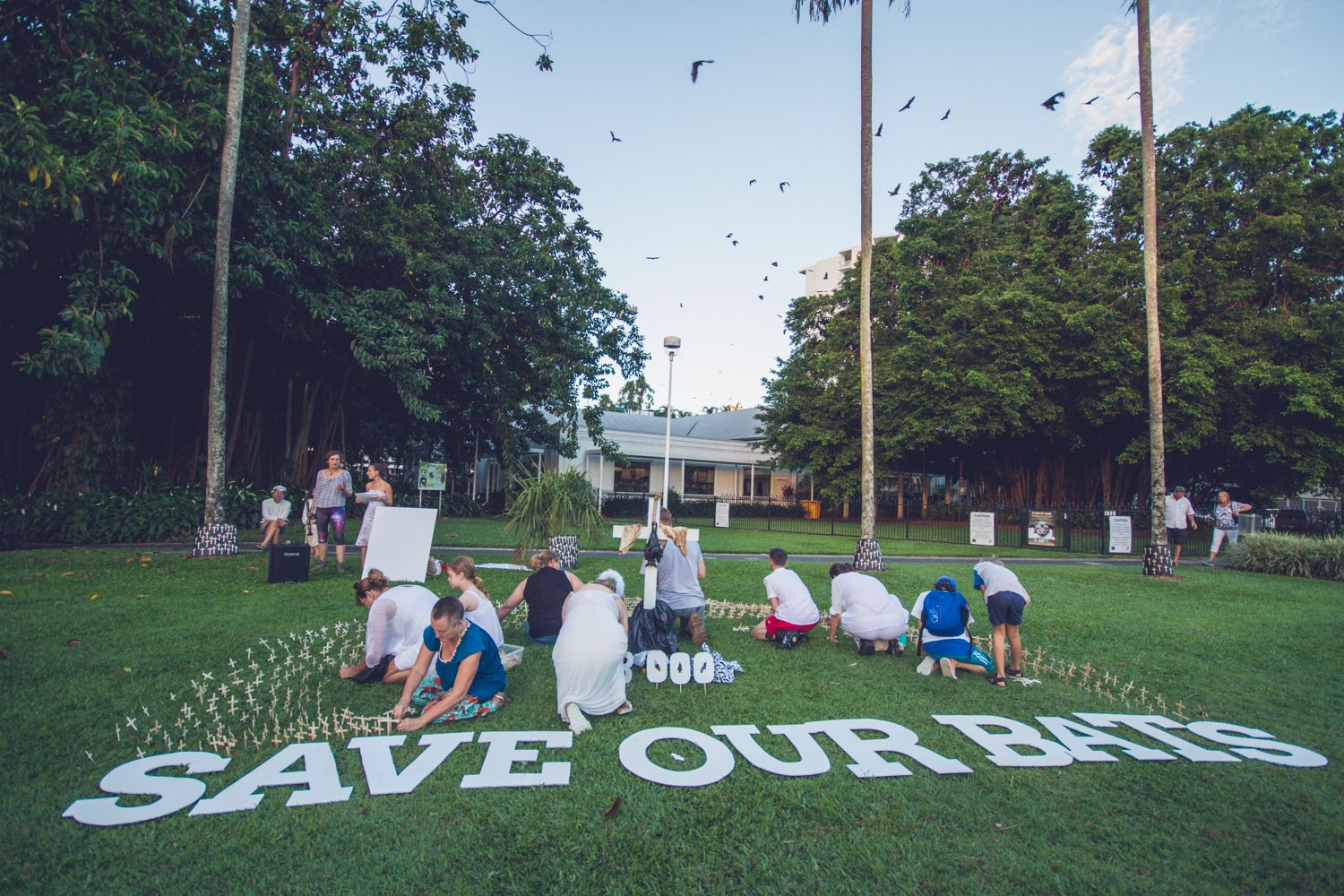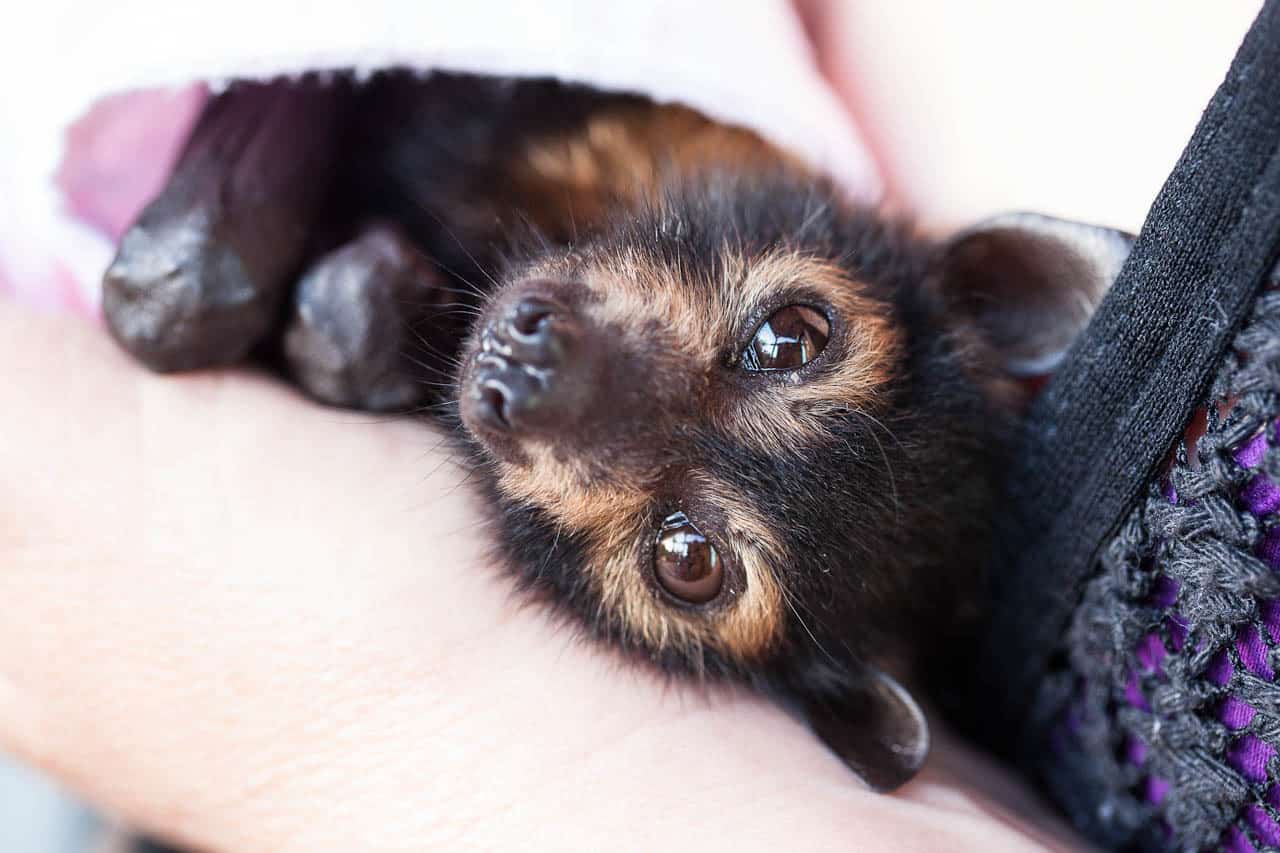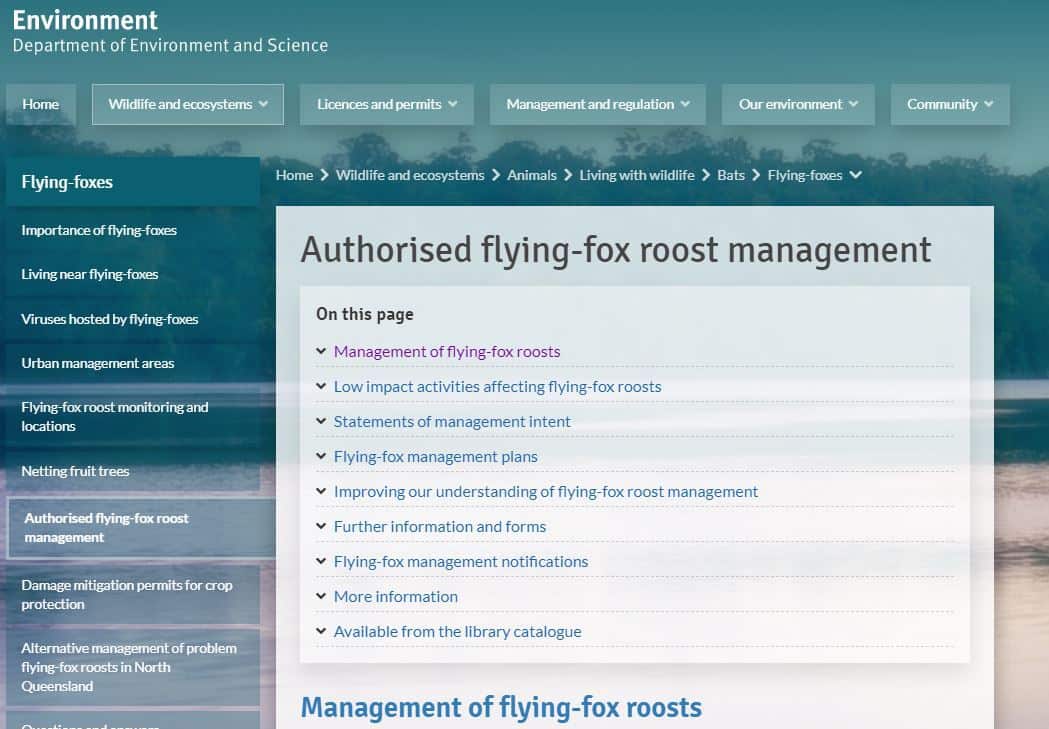Spectacled Flying Foxes
THE ISSUE
Spectacled Flying Foxes are a very special part of Far North Queensland and are a key pollinator for our beautiful rainforests. They are currently under threat from loss of habitat, climate change and urban development. In 2019 they were listed as Endangered, however, the recent mass death in November 2018 were not considered in this listing. Experts tell us the numbers indicate Spectacled Flying Foxes should be listed as Critically Endangered. Despite the stress on the population of these important creatures, they continue to face on going and unnecessary threats from human activity, particularly development and ongong dispersal attempts from the Cairns Regional Council.
THE SOLUTION
WSpectacled Flying Foxes are critical to the health of our World Heritage listed Wet Tropics Rainforest. The species is in rapid decline with 30% of the Australian population lost in just 3 days due to heat stress. In 2019 the species was listed as an Endangered species both at a state and national level.
Despite this, local governments still have the ability to: destroy roosts and drive away or disturb a flying-fox in a roost.
In the lead up to the state election in 2015 the Palaszczuk Labor government committed to repealing the Flying Fox Code of Practice, stating they would;
“Repeal changes to the flying fox management regulations and return to a modern framework of protection.”
To this day the laws remain in place. The Code of Practice for the Ecologically Sustainable Management of Flying Fox Roosts, must be repealed.
Featured News & Actions

Cairns Regional Council 'Relocation Plan'

NEWS | 30% of Australian Population Lost in 3 days!
ABOUT
More about the Problem
The Cairns Flying Fox Advisory Committee was informed in 2019 by an eminent flying-fox expert that the Spectacled Flying Fox (SFF) population in Australia had decreased by 80 to 85% meaning it would likely meet the criteria for Critically Endangered status. At the same meeting, Cairns Regional Council (CRC) advised that the SFF ‘deterrence’ plans for the Cairns Library Camp would go ahead and had been moved forward to as early as March 2019.
Significant threats to Spectacled Flying Foxes include loss of habitat/food sources and persecution at camps. Food sources have been lost through coastal development, agricultural intensification and cyclones. With such a dramatic decline in population numbers, it is possible we could be witnessing a negative feedback loop. Even at the current status of Endangered, a 70% loss of population surely has major ramifications for the World Heritage listed Wet Tropics. Surely fewer bats means fewer seeds are being spread. Fewer seeds means fewer trees which means less food for the bats. Less food, fewer bats. And the cycle continues its downward spiral. This is extinction in action. Long term recovery will depend on funding research on food sources and applying it to actively restore food sources across the landscape. But this will take time and in the meantime, we must find ways to urgently protect the species wherever they are, including in urban areas.
A NEW THREAT
A new threat in the form of heatwaves and heat stress has emerged, as evidenced by the loss of over 23,000 SFF in November 2018. To be clear, heat stress has never been a significant issue for this species before. Heat stress has affected other species further south, but the November 2018 heat wave was the first time the SFF population had been significantly struck by this threat. The event was the equivalent of coral bleaching for our Wet Tropics, sending a clear signal of just how swiftly and significantly climate change impacts can occur. This is a new threat for which many people are now looking to find solutions. It is worth noting, however, that this heat stress event came on the back of a starvation event with hundreds of bats dying from lack of food in the lead up.
THE LAWS
As if these large, complex issues weren’t enough, this critically endangered species doesn’t even have basic protection from direct habitat disturbance and destruction. State legislation allows dispersal and destruction of flying fox roosts in urban areas and makes no exceptions for Threatened and/or Endangered species of flying foxes other than to draw the line at directly killing them. Before coming to office in 2015, the aspiring Palaszczuk government acknowledged this was a problem and made commitments to change it. However, since coming to power seven years ago, the Palaszczuk government have left in place Newman-era legislation, presiding over the continued rapid decline of the species.
At the federal level, ambiguous legislation has allowed roost destruction to avoid controlling measures based on the uncertainty of what is considered a ‘likely’ or ‘significant’ impact on the population. We argue that disturbance at the Cairns CBD camp can no longer possibly be considered as not ‘likely’ to have ‘significant’ impact when it is the only camp in the region that is permanently inhabited, has possibly fared better than other camps (such as those at Edmonton) in the November heat wave and could potentially now contain more than 10% of the entire national population.
Furthermore, it appears federal assessments are relying on state legislation to protect the species and state assessment is relying on federal legislation – it is a classic blame shifting exercise which results in nobody being held accountable for protecting biodiversity and preventing the extinction of a keystone Wet Tropics species. Both levels of government have obligations to do so and both need to urgently step up to the plate.
SUCCESS RATE AND COST OF DISPERSAL
We don’t underestimate the negative side effects of living next to a colony of flying foxes but our community is being sold the lie that getting rid of them is as easy as blasting sound. There is a distinct possibility that dispersal in the CBD will result in the bats spreading out and affecting a greater number of residents with management becoming even harder and more expensive.
Dispersal doesn’t work in the long term and costs a fortune. CRC has not been honest with ratepayers about this in the way other councils have. Already it has been alleged we are spending $200,000 a year in Cairns just keeping them out of Esplanade and Woolshed trees and when the sound blasting stops, the bats return in a few days. The SFF only started moving to these less desirable locations following the systematic removal of 25 out of 38 original roost trees in the CBD, primarily on the Novotel block which has now been divided and sold to develop the Cairns Aquarium and the New Crystalbrook Hotel currently under construction. All three levels of government have allowed this destruction to happen.
Now add in the costs of the CRC’s proposed ‘deterrence’ at the City Library Camp which will send thousands of bats searching for new roosts. CRC will also be able to undertake necessary additional deterrents elsewhere should the bats land in other less desirable locations. Does that mean we could also see ‘deterrence’ at the adjacent Munro Martin Parklands? Or maybe ‘deterrence’ at Cairns Central Swamp where it is alleged they would pose an increased air-strike risk due to proximity to flight paths? What if they move to suburban areas? Will we ‘deter’ them there as well? Seriously, how much is this going to cost? And for how long, before the CRC admits the costs are unsustainable?
What’s more, a study that looked at the success of 25 dispersals in other municipalities found that the flying foxes didn’t move more than 6 km. Where exactly will CRC allow them to land within 6 km of the Cairns CBD library camp? The proposed Edmonton release cage is more like 12 km from the CBD. There is no evidence to suggest they will move this far. What is the chance CRC’s ‘deterrent’ activities will move the SFFs to even less desirable locations within 6 km of the CBD?
Further Reading:
ABOUT THE SPECIES
THE LAWS
CSIRO REPORT
RECEIVE UPDATES
Stay Updated!
Don’t miss an opportunity to make a difference. Join the mailing list to receive CAFNEC news, events, actions and more!

CARERS & EXPERTS DO NOT SUPPORT
There are claims that the community and wildlife carers support the council’s management plans but this is not true. This plan to go ahead with the implementation of such disruptive and costly management actions has absolutely flabbergasted wildlife carers, biologists and even the experts on the Flying Fox Advisory Committee (FFAC) whose role it is to provide advice to CRC on how to best manage the species (scroll down and listen to FFAC Chair Martin Cohen talking to ABC on the issue).
The original proposal in 2019 was to put the cage at Cairns Central Swamp less than 6km from the CBD, leave it there for at least two breeding seasons to see if the CBD bats move on their own and, if not, then in time consider ‘active management’ or dispersal/deterrent and only if it was scientifically supported.
There were three key aspects to the dispersal plans that nullified community and carers conditional support for the original proposal.
1.) Location of the release cage: the release cage in Edmonton was supported as a safe place to release rehabilitated animals with hopes that as the juveniles grow, they will return to Edmonton and not the CBD. However, with the cage located more than 6 km from the CBD, there are no expectations that the current adult population or babies raised in the CBD will move this far.
2.) Timing of ‘active management’ or dispersal/deterrent: the release cage had not been established, let alone in place long enough to observe if the bats were going to move without the cost and stress of dispersal/deterrent activities.
3.) Scientific support: CRC failed to provide evidence from eminent flying-fox experts that the ‘deterrent’ was scientifically supported.
There is every chance that the CRC’s management activities won’t work and CRC have not communicated the risks involved in these very expensive management interventions. If it doesn’t all go to plan, it could be worse for the community, worse for the bats and result in unsustainable costs to ratepayers.
In 2019 the four community experts on the Council’s own Flying Fox Advisory Committee released a damning open letter categorically opposing this action.
Read the letter here: https://bit.ly/2UD5rdk
ttings.
Current Situation: Cairns Library Camp
The Spectacled Flying Fox Cairns Library colony not only is capable of holding 10% of the overall Spectacled Flying Fox population and is a primary breeding roost listed as Nationally Significant, but it also thought to have fared the best during the heatwave. This camp has been put under multiple stressors in the past decade – majority of which are a direct result of the cumulative approvals by State and Federal Governments to allow the destruction of 25 out of 38 original roost trees in the blocks surrounding the library. This is not how we should manage a rapidly declining threatened species.
With great community strength and determination there were thousands of individual submissions written to the Federal Government raising deep concerns about CRC Relocation Management Plan across both opportunities for comment. Sadly, after great trepidation in May 2020 the proposal was assessed and APPROVED by the Federal Government under the Environment Protection and Biodiversity Conservation Act 1999 (EPBC) – our national environmental laws that have consistently failed the species and ecosystems they were created to protect.
When speaking with the federal and state environment departments, jointly responsible for the management of the species, they asserted to CAFNEC that they are comfortable with their management of the species. The federal department also indicated that an update of the species management plan, due to expire in early 2021, is not a priority despite it being close to a decade old and having entirely failed to ‘recover’ the species.
The newly elected Cairns Regional Council has pushed ahead with plans to disperse the Cairns Library Flying Fox roost, commencing Wednesday 1st July 2020, and disturbances may continue for the next three to five years. This decision to ‘relocate’ the animals comes despite the Species Recovery Plan identifying such tactics as significant threat.
Our environmental laws and government departments are failing to protect this species which is a keystone species for the Wet Tropics. This relocation plan is not well informed and the plan itself highlights that the proposed methods are ineffective and costly (Read more: CAFNEC’s submission to EPBC). Over the past few years CAFNEC has poured over the legislation and been in constant contact with the State and Federal Government departments giving them multiple avenues and opportunities to take action to stop not only the willful destruction of the roost trees to date but also this dispersal in particular. They have done nothing. CAFNEC met with BatSoc and EDO NQ to investigate rights to appeal for the current dispersal, leaving no stone unturned but sadly with no good outcome for the bats.
This is not how we recover from crisis, environmental or economic. After the heatwave of 2018 that killed 23 000 SFF in a week, the government at all levels has failed to implement any management actions that have actually further protected the species to bring it out of decline. On the contrary, they have approved actions that are more likely to do the opposite. This is not how we recover from environmental crisis.
But what about economic crisis? Cairns is pitched to be one of the hardest hit economically due to the Coronavirus pandemic and our reliance on tourism. The local council are currently navigating a plan to combat this which no doubt involves cutting unnecessary costs. Why then are they proceeding with disturbing an endangered species at a cost in the hundreds of thousands, potentially millions, when relocation methods haven’t been successful in other places?
Despite this devastating news, we know we cannot stop here and we won’t stop here. The SFF was listed as an Endangered Species in 2019, a change which did not take account for the mass death in 2018. According to leading bat experts the species currently meets the criteria of Critically Endangered. The population has continued to decline dramatically due to the loss of food and habitat sources, and the persecution at camps. We can still take action to ensure that this species can recover on the whole. This action will likely go ahead but that doesn’t mean the fight for this species is over. There are a number of ways you can have your voice heard and express your distaste at the dispersal, and we will be in touch with further actions beyond July shortly.
Further Reading:
- Ecotone June 2020, page 4 ‘Poor Management continues to fail our endangered flying foxes’ – Maree Treadwell-Kerr
- The Gaurdian 15th June 2020 ‘Dispersal of flying foxes from centre of Cairns ‘farcical’, wildlife groups say’ – Lisa Cox
- Environmental Defenders Office 11th June 2020 ‘Spectacled Flying Foxes – Endangered but unprotected’ – Kirstiana Ward
More about the Situation
In May 2019, Cairns Regional Council’s Spectacled Flying Fox (SFF) Management Plan (proposing to disperse the City Library camp and include ongoing deterrence) was deemed a Controlled Action under the Environmental Protection Biodiversity Conservation (EPBC) Act, and considered likely to have significant impacts on the SFF population. As such, the referral proceeded to the next stages of the process whereby Council was required to provide more information to the Federal Environment Department.
In response to the request for further information, the Cairns Regional Council (CRC) put forward a revised management plan. That revised plan was consulted by the public, and CRC was asked to consider our community’s concerns and address them before submitting their revised plan to the Federal Environment Department.
CAFNEC has been working with the Cairns community to ensure the conservation of SFF for decades. There is a distinct possibility that dispersal in the CBD could result in a negative outcome for both our community and the bats and result in unsustainable costs to ratepayers. Furthermore, CRC cannot control where the SFF will relocate to after dispersal and has not properly analysed the risk associated with the SFF roosting elsewhere.
Submissions have now CLOSED but you can read CAFNEC’s submission on the proposed relocation plan: CAFNEC Submission – Cairns Flying-fox Relocation Management Plan R07
Read Cairns Regional Council’s Relocation Management Plan: https://www.cairns.qld.gov.au/__data/assets/pdf_file/0020/322832/CRC-Flying-Fox-Relocation-Plan-R07.pdf?fbclid=IwAR3EPIVB6J3mzCeYvRVVzinEloM6TF4nbQwRoFzddJPTRWxHkN29HzAmUuM
Cairns Regional Council’s Media release: https://www.cairns.qld.gov.au/…/…/flying-fox-relocation-plan
Take action:
-
Call your local Councillor to let them know that this is not how we recover from crisis, and we should not be creating further stress for this endangered species. Click here for a list of Councillors – their mobile numbers are listed and you can send them a quick text
-
Sign the petition that Extinction Rebellion has started. XR Cairns have been doing excellent work raising awareness of the problem through the petition, at Rusty’s markets and more. Keep an eye out on their Facebook for further actions.
-
Share the letter – prepared by XR Cairns, CAFNEC has signed up to a letter asking Council to halt dispersals. You can help by asking businesses and organisations to sign on to this program.


